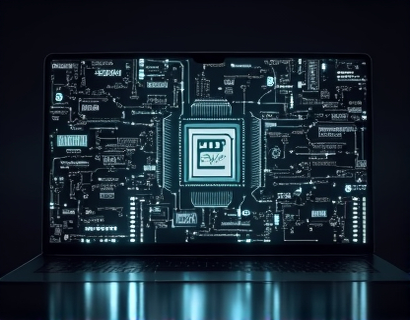Streamlining Government Leadership: Advanced Software for Enhanced Efficiency and Collaboration
In the realm of governance, the need for efficient and effective administration has never been more critical. As governments and organizations strive to meet the growing demands of their constituents, the integration of advanced software solutions has emerged as a pivotal strategy to streamline processes, enhance decision-making, and foster collaboration. This article delves into the transformative impact of innovative tools that simplify complex administrative tasks, empowering leaders to achieve operational excellence and modernize their practices. For those committed to enhancing efficiency and effectiveness in governance and resource management, understanding the role of these advanced software solutions is essential.
The traditional methods of government and organizational administration are often characterized by cumbersome processes, siloed departments, and slow decision-making. These inefficiencies not only hinder performance but also limit the ability of leaders to respond promptly to the needs of the public. Advanced software solutions address these challenges by providing robust platforms that integrate various functions, automate repetitive tasks, and facilitate seamless communication across different levels of the organization.
Simplifying Complex Administrative Tasks
One of the primary benefits of advanced software in government leadership is the simplification of complex administrative tasks. These tools offer comprehensive solutions that cover a wide range of functions, from financial management and procurement to human resources and public services. By consolidating these processes into a single, user-friendly platform, leaders can reduce the administrative burden and focus on strategic initiatives.
For instance, financial management software can automate budgeting, accounting, and reporting processes, ensuring accuracy and compliance with minimal manual intervention. This not only saves time but also reduces the risk of errors, leading to more reliable financial data and better-informed decisions. Similarly, procurement systems can streamline the purchasing process, from requisition to payment, by providing a transparent and traceable workflow. This enhances accountability and efficiency, ensuring that resources are allocated effectively.
Enhancing Decision-Making
Effective governance relies heavily on informed decision-making. Advanced software solutions play a crucial role in this aspect by providing leaders with real-time data and insights. Data analytics tools integrated into these platforms can process large volumes of information, identify trends, and generate actionable insights. This empowers leaders to make data-driven decisions, rather than relying on intuition or incomplete information.
Moreover, these tools often include collaborative features that allow multiple stakeholders to contribute to the decision-making process. For example, a project management system can enable team members to track progress, share documents, and provide feedback in a centralized environment. This ensures that all relevant parties are aligned and that decisions are based on a comprehensive understanding of the situation.
Fostering Collaboration
Collaboration is a cornerstone of modern governance, and advanced software solutions are designed to facilitate this. By breaking down silos and promoting cross-departmental communication, these tools help create a more cohesive and responsive organization. For instance, a unified communication platform can integrate messaging, video conferencing, and file sharing, allowing employees to collaborate seamlessly regardless of their physical location.
Additionally, these platforms often include role-based access controls and customizable workflows, ensuring that the right information reaches the right people at the right time. This not only improves efficiency but also builds trust and transparency within the organization. When team members can easily access and contribute to shared projects, the overall performance of the organization improves significantly.
Case Studies and Real-World Applications
To illustrate the transformative impact of advanced software in government leadership, consider a few real-world examples. City X implemented a comprehensive municipal management system that integrated various services such as public works, utilities, and public safety. The system provided a single dashboard for city officials to monitor and manage these services, leading to a 30% reduction in operational costs and a 25% improvement in response times for public services.
Another example is State Y, which adopted an advanced procurement platform to streamline its purchasing processes. The platform automated many steps, from vendor management to contract execution, resulting in a 40% decrease in procurement costs and a significant reduction in fraud and corruption. The transparency and efficiency brought about by the new system enhanced public trust and improved the overall governance of the state.
Challenges and Considerations
While the benefits of advanced software solutions are clear, implementing these tools is not without challenges. One of the primary concerns is the initial cost and the need for training and support to ensure smooth adoption. Governments and organizations must carefully evaluate their resources and plan for a phased implementation to minimize disruption.
Data security and privacy are also critical considerations. Advanced software must comply with stringent regulations and standards to protect sensitive information. Leaders must ensure that the solutions they adopt have robust security features and regular updates to address emerging threats.
Future Trends and Innovations
The landscape of government leadership software is continually evolving, driven by advancements in technology such as artificial intelligence, blockchain, and the Internet of Things (IoT). AI-powered analytics can further enhance decision-making by predicting outcomes and suggesting optimal actions. Blockchain technology can provide immutable records and enhance transparency in transactions, reducing the risk of fraud. IoT devices can enable real-time monitoring of infrastructure and public services, allowing for proactive maintenance and improved efficiency.
As these technologies mature, we can expect even more sophisticated and integrated solutions that will continue to transform government and organizational administration. Leaders who stay ahead of these trends and embrace innovative tools will be better positioned to achieve operational excellence and serve their communities more effectively.
In conclusion, advanced software solutions offer a powerful means to streamline government leadership, enhance efficiency, and foster collaboration. By simplifying complex tasks, providing real-time data, and promoting cross-departmental communication, these tools empower leaders to modernize their practices and achieve greater operational excellence. As governments and organizations continue to face increasing challenges, the strategic adoption of these innovative solutions will be crucial in ensuring effective and responsive governance.










































